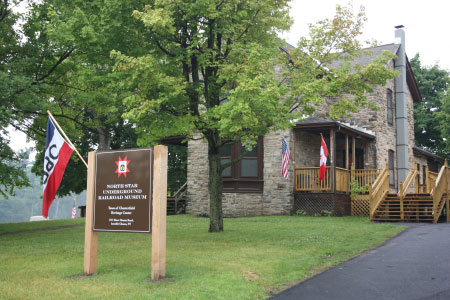
There are some books we never forget and some that we read more than once. One of those books for me is “An American Tragedy” by Theodore Dreiser. My first read of the book was in college as an assignment in an American literature class. The book, along with books like “Grapes of Wrath” is seen as the beginning of the modern American literature. I was intrigued because I knew the story was based on true events and that it took place in New York State. The climax of the book ended in my old stomping grounds, the Adirondacks. I later found out that my great aunt was working as a chambermaid at the same hotel where the main characters stayed – The Glenmore Hotel. The book shows the extent someone will go to realize the American Dream ignoring any sense of morality. The story is timeless.
 When I was in Cortland recently I visited Cinch Art Space, a store with a plethora of beautiful artwork by over 50 local artists. There was everything from delicate fairies to handcrafted notepaper to fine woodwork. It is located, along with other businesses, in the old Cortland Corset Factory. I love repurposed old buildings then I learned at the building had a literary connection of sorts. When it was the Cortland Skirt Factory it was where the real-life Grace Brown and Chester Gillette worked. They became the basis of Theodore Dreiser’s “An American Tragedy” which has been named by “Time Magazine” as one the top 100 novels written in English since 1923. Interestingly, it was banned in Boston in 1927 and burned by the Nazis in Germany in 1933 because it “deals with low love affairs.”
When I was in Cortland recently I visited Cinch Art Space, a store with a plethora of beautiful artwork by over 50 local artists. There was everything from delicate fairies to handcrafted notepaper to fine woodwork. It is located, along with other businesses, in the old Cortland Corset Factory. I love repurposed old buildings then I learned at the building had a literary connection of sorts. When it was the Cortland Skirt Factory it was where the real-life Grace Brown and Chester Gillette worked. They became the basis of Theodore Dreiser’s “An American Tragedy” which has been named by “Time Magazine” as one the top 100 novels written in English since 1923. Interestingly, it was banned in Boston in 1927 and burned by the Nazis in Germany in 1933 because it “deals with low love affairs.”
 Dreiser changed some of the names and places when writing the book but basically the story is the same. Chester Gillette was born into a successful family but his father, after a religious conversion, renounced his wealth and became a roving missionary for the Salvation Army. Gillette, however, still hankered for the good life and when his uncle offered him a job at his factory in Cortland he accepted. He had the opportunity to work hard and advanced. Knowing that he should not consort with the help, Gillette ignored the advice and began seeing Grace Brown, a hard working girl from a farm family. They usually met at her place and not in public. Meanwhile, Gillette moved up the social rung and began dating the daughter of a prominent family. Grace Brown became pregnant and wanted to get married but that would have interfered in Gillette’s hope for marrying someone from the upper class.
Dreiser changed some of the names and places when writing the book but basically the story is the same. Chester Gillette was born into a successful family but his father, after a religious conversion, renounced his wealth and became a roving missionary for the Salvation Army. Gillette, however, still hankered for the good life and when his uncle offered him a job at his factory in Cortland he accepted. He had the opportunity to work hard and advanced. Knowing that he should not consort with the help, Gillette ignored the advice and began seeing Grace Brown, a hard working girl from a farm family. They usually met at her place and not in public. Meanwhile, Gillette moved up the social rung and began dating the daughter of a prominent family. Grace Brown became pregnant and wanted to get married but that would have interfered in Gillette’s hope for marrying someone from the upper class.
 Fearing that Grace would expose their relationship, on the ruse that they were going on a honeymoon, the two traveled to The Glenmore Hotel on Big Moose Lake in the Adirondacks. He took her out in a canoe and probably hit her with the canoe paddle or his tennis racquet, the canoe overturned, she drowned. She left her belongings behind but Gillette took his suitcase and tennis racquet. He ditched the racquet on the way to Inlet, NY; he checked into the Arrowhead Hotel where he was arrested. His trial attracted international attention – the OJ trial of its time. He was executed in Auburn Prison.
Fearing that Grace would expose their relationship, on the ruse that they were going on a honeymoon, the two traveled to The Glenmore Hotel on Big Moose Lake in the Adirondacks. He took her out in a canoe and probably hit her with the canoe paddle or his tennis racquet, the canoe overturned, she drowned. She left her belongings behind but Gillette took his suitcase and tennis racquet. He ditched the racquet on the way to Inlet, NY; he checked into the Arrowhead Hotel where he was arrested. His trial attracted international attention – the OJ trial of its time. He was executed in Auburn Prison.
Besides Dreiser’s book there have been several stage and screen adaptations including the 1951 award-winning movie, “A Place in the Sun” starring Elizabeth Taylor.












































